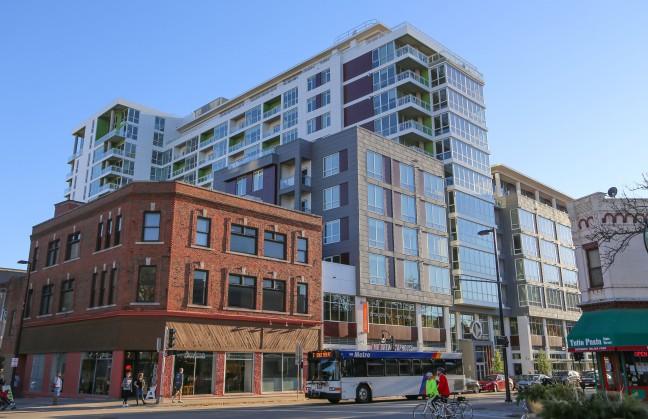October is a busy month for college students. The month brings Halloween preparations, school projects, papers, midterm exams and everyone’s favorite topic: housing.
Finding housing for the next school year can be very stressful for students, especially those at the University of Wisconsin, as the pressure to sign a lease starts in early October. October is not only a busy time for students, but it’s also a time when many students are unsure of what their future plans are. Things like study-abroad programs, graduation requirements and roommate relationships can all drastically affect students’ housing decisions, and October is only one month into the school year, meaning many students’ plans will likely change.
For incoming first-year students, the housing search is objectively easier. More than 90% of freshmen choose to live in University residence halls, and that process does not start until students get accepted into the university, usually some time in the spring.
Unfortunately, for UW students already on campus, the pressure to figure out housing for next year starts early, and making the decision where to live is not so simple. High-rise buildings, houses, small apartment buildings and dorms are essentially all advertised to students at once, which can make the decision especially daunting and confusing.
Other large universities such as the University of Georgia, the University of Michigan, and the University of Florida offer a variety of options for apartments and suite-style living through the university, which is a great option for sophomores and upperclassmen, who likely want more freedom but may be unsure about venturing to off-campus housing.
Though UW originally only offered traditional dorms to undergraduates, the university-owned Eagle Heights Apartments will now be available to non-freshmen undergraduates starting in fall of 2020. Eagle Heights has traditionally only been open to graduate students, postdoctoral researchers, students with families, staff and faculty.
The Eagle Heights apartment complex contains 1,050 apartments, and 99 of these apartments will be separated for non-freshmen undergraduates next year in what will be known as The 100s at Eagle Heights. This is a great first step in allowing more university-owned housing options to undergraduates, but the reality is that Eagle Heights is located west of Camp Randall and west of the university hospitals, requiring a long ride on the 80 bus route to get to and from central campus.
Currently, many undergraduates turn to off-campus housing after their first year, as UW does not offer many viable options for upperclassmen. Returning to the dorms can make students feel like “forever freshmen,” as it does not allow for students to really cook their own food, have their own space or experience life as a “real adult.”
As a sophomore, I lived in a single dorm in Smith Hall last year, and was the only non-freshman on my floor besides my house fellow. While the building itself was nice, my dorm was extremely small. Additionally, it was an uncomfortable experience, as I did not become close with many people on my floor, and generally felt out of place.
Eagle Heights Apartments are the first university apartments that will be available to undergraduates. Yet, if the only apartment option through the university is a 20-minute bus ride away, the problem has not really been solved.
For the university to truly compete with off-campus housing options like other apartment buildings, they would need to make apartments for undergraduates that are central to campus, and comparable in cost to surrounding options.
With the addition of the meal plan, campus housing has even come to surpass in-state tuition in some cases. In 2018, many students protested the new mandatory meal plan for all incoming students who choose to live in residence halls, citing the meal plan requirement as economically discriminatory against students. This proves how serious the problem has gotten.
With both a lack of apartments and a lack of affordability, it makes sense why university housing is not popular among non-freshmen undergraduates. While Eagle Heights’ availability to returning UW students may offer some sort of incentive, the university still has a long way to go in appealing to a broader group of students.
Courtney Degen (cdegen@wisc.edu) is a junior majoring in political science and journalism.


